An Interview with Pattern Designer Rae Hoekstra
on how to learn to sew, sourcing fabrics, finding patterns, and embracing a beginner's mindset
When I was a young mother and new to sewing, I went to a big box store and picked up a sewing pattern to begin sewing for my then toddler, Jude. But when I opened the pattern, I struggled to make sense of it. I tried to find my way through, but ultimately my project did not turn out as I had hoped. That might have been the end of my relationship with sewing had I not discovered patterns by independent designers. They walked me through each step with clarity, some hand-holding via photos and tutorials, and attention to the details. It felt like some kind of alchemy when my garments were finished, and it was so empowering!
One of the first dresses I ever sewed was the Geranium dress by Made by Rae. I went on to make many more. Now that dress is inextricably linked to my memories of my daughters’ childhoods. I learned to sew with knit (stretchy) fabrics using Rae’s Flashback tee pattern. I made those tees again and again, mostly in stripes. Rae and I worked together on the pattern cover for the Geranium dress expansion pack, another one I love.
I feel fortunate to have had the chance to interview Rae. She has great advice for new sewing enthusiasts and wonderful suggestions and resources for those of us who have been at it for a long time, too.
What was it that drew you to sewing originally and then to pattern design?
I grew up in a creative family…my dad was a chemist and my mom was a librarian, but both had multiple artistic outlets and hobbies. The prevailing wisdom in our house was if you want something, you make it. I remember attempting (at age 6) to make a doll for my sister out of toilet paper tubes, kleenex, and scotch tape as a Christmas present. It fell apart almost immediately, but I was so proud of that thing. Shortly after that (maybe because of that?? LOL) my mom taught me how to sew - first by hand, and then by machine - it feels now like sewing has always just been something that I do.
In high school, I started sewing clothes for myself as a form of self expression; I wanted to dress in a fun and unique way at a time when it seemed like everyone else was trying to look the same; designer jeans and polo shirts were popular and my mom either couldn’t or wouldn’t buy those for me. I had learned how to use a sewing pattern in fifth grade (the tissue kind) so I began to riff on the basic shapes and make my own clothes by hacking patterns. However, it wasn’t until I started sewing for my own kids - especially after my first son was born – that I actually began drafting and designing my own patterns, both for my kids, and for myself, and then selling them as PDFs. All of that was also happening against the backdrop of the early blog years - 2000-2010 - when there was so much new energy online for sewing and sharing projects with other folks on the internet.
What advice do you have for someone who is new to sewing but doesn’t know where to begin? How can a beginner navigate the vast world of patterns?
This question (and your next question, too, actually) brings up something I feel very passionate about: while the internet is truly a wonderful place to follow and find other makers and indie pattern companies, get sewing inspiration, find beginner sewing resources (YouTube tutorials, free patterns, etc) and meet new virtual sewing friends - I have many positive things to say about the “online sewing community” – there is absolutely no replacement for learning to sew in real life from and with actual humans who are in the same physical space as you. I don’t know what to call this other than the IRL SEWING COMMUNITY, but there’s just no virtual equivalent that even comes close. You learn faster, better, and more when you learn in person.
Learning usually happens in fits and spurts, and personally, when I think about the biggest jumps in my sewing or crafting knowledge, it has always been in the context of a workshop, class, or retreat. Like the time I learned about sewing and fitting muslins with Liesl Gibson; what a gamechanger. Or the knitting weekend where I went from being a person who googles “how to knit vs how to purl” to someone who could do two handed colorwork. Even the workshops where I’m the teacher - I always learn something new, love that. And of course it is an immense privilege to be able to carve out time away when you have a job or family, and it’s an investment. But if there’s a way for you to make in-person sewing experiences happen, I really want to encourage anyone reading this to make it a priority.
In that same vein, I’d be remiss if I didn’t mention the amazing resource that is independently owned brick and mortar sewing shops. I’m not really talking about quilting shops here - I’m thinking shops that cater to apparel sewing and carry apparel fabrics and patterns, like Ewe Fibers in Charlottesville, Gather Here in Boston, Bolt Fabric Boutique in Portland, Stonemountain in Berkeley, Fiddlehead in Maine, Freeman’s Creative, Notion Vermont, I could go on and on. The work they are doing to offer curated collections of indie patterns and apparel fabrics is incredible, and their staff are usually avid sewists themselves who can give great recommendations. These are the folks who you can ask for ideas for that first project, which fabric to make it with, and other tips, tools, and advice. These shops also frequently offer beginner sewing classes, and feature patterns that are appropriate for beginners. Because there’s no replacement for having someone teach you (or give you a personalized pattern rec) in person, so take advantage of that if you have it nearby!
Of course, these shops all have an online presence and share awesome combos of patterns and fabrics on their social accounts, too, so even if you don’t live close enough to visit in person, you can order online with more confidence.
I’m also going to put in a plug here for my own patterns because they are truly easy to follow along and learn from. And it’s not just me saying that - people who started with one of my patterns often write or comment to tell me so, which is so great to hear. I’ve worked hard to make them that way, so this is me tooting my own horn and not apologizing for it. It’s really important that sewing patterns be effective at helping beginners gain skills and confidence, because when that happens, you start to love sewing, and I really love sewing so of course I want that for everybody.
To give specific pattern recs: I usually recommend Parsley Pants if you’re just starting and sewing for kids – those have some great basic skills like curved seams, hemming, and elastic waistbands - and can be made out of fabrics that are easy to work with like cotton or linen. And you already mentioned the Flashback tee (which is for knits), and Geranium (which has slightly more advanced skills like buttonholes and an easy lining), and those two are great too, especially if you’re a more confident beginner. Bonus with kids sewing is that the projects are smaller and don’t take a lot of fabric.
For adult-sized garment sewing, Ruby is my most basic, learn-to-sew pattern, and it doesn’t have any tricky bits like zippers or darts, which can be intimidating for beginners. The Isla dress and the Jade tee are both very basic knit patterns (bonus there: those pieces can be mixed and matched), and Trillium is another confident beginner favorite - so many people have learned to sew on that one.
Where are your favorite places to shop for fabrics?
I follow all of the brick and mortar shops that I’ve just listed in the previous question, plus a few other online-only fabric shops - on Instagram and I save the posts where they feature a fabric that catches my eye. Then, when I’m searching for fabric for a project, I can check my saves or just peruse their website - it’s less overwhelming for me when the shop has smaller, more curated fabric offerings - and I almost always find something great.
And of course, I follow a lot of garment makers online – especially folks whose aesthetic aligns with mine. If you pay attention to their reviews, to the fabric they’ve used, and the pattern companies they gravitate toward, a lot of times you’ll find a pattern that you really like and new fabrics to try.
You and I both sewed a lot when we had small children. How did you make the time to sew while also raising small children and running a business?
A few things here. First, I had help. I had a partner who got how important sewing was to me, though honestly he’s just a smart guy and knew it was in his best interest that I be happy. I don’t like to say “I’m so lucky to have such a supportive spouse” because coded in that language is “As a mother, I didn’t deserve to have a career or free time to myself; it’s something I had to be given.” We had a cleaning service, and babysitters, and day care, so that’s loads of other (mostly) women right there who probably weren’t paid enough to make our lives easier. That’s a real problem with our society; the work of caring for and educating children and domestic labor is underpaid and undervalued.
Second, I almost never sewed in long, luxurious chunks of time. I found time to sew when I could, which was during my kiddos’ naps, while they watched one Charlie and Lola episode after another, when Mr Rae took them to the grocery store on Saturday mornings, or after we tucked them in at night, and it was often punctuated by interruption. But ultimately, I wanted to sew; so I sewed. I guess most of the time I didn’t even really think about it, it just happened. But in choosing to sew, I was not doing other things that other parents might do when they have time to unwind, like read a book, bake or garden or watch TV. I’m good at sewing, but I really suck at cooking.
It’s funny though, looking back I don’t think of those “small kid” years as being any more busy than they are now. If anything, I was younger then and had more energy so it was easier to sew. Nowadays, I’m older and I’m tired, so I usually knit or read or watch TV when I have free time. I definitely wasn’t able to sustain that somewhat-insane level of sewing productivity into my mid-forties, which is totally fine.
Sewing can leave a large footprint in our homes. One friend living in an apartment in Chicago asked if you have any advice on managing that, especially for people living in smaller spaces. She wondered if there was a way to intuit a good stopping place in a pattern so she could put her project away and use her table for dinner.
I really get this question because I’m currently between studio spaces and have been doing all of my sewing at home lately, and yes, the dinner table suddenly becomes prime real estate in the house.
Broadly speaking, the steps of any sewing pattern can be divided up into four general areas:
the cutting steps
the prep steps (attaching interfacing or pockets, staystitching, etc)
the seam steps (where you sew the actual pieces together; center seams, in/outseams, shoulder seams, etc)
and the finishing steps (where you’re finishing the remaining raw edges, like attaching a waistband or collar, binding armholes, or hemming).
The first - cutting - requires a different set of tools and setup, like cutting tools and a larger surface area for cutting so that’s a natural place to stop. The last three– they all require the same sewing and pressing tools – but when I’m short on time or space, I mentally subdivide the pattern up and stop at the end of one of those sections. For example, I might stop when I’ve sewn all of the seams, but I still have the “finishing steps” to go.
This idea of “intuiting”...this is something that comes more easily with experience, like literally everything else you get better at it the more you do it. But one tip that really helps (I’m almost certain that this tip came from Liesl Gibson): when you know you have to stop, get the next step ready, but leave it right under the presser foot of your machine, so that when you are ready to start again, you can literally just turn the machine on and start sewing. For me, this removes the “now where was I again?” hurdle that can really throw a wrench in your project. I’m always thanking Yesterday Rae whenever she does this for me.
I love your children’s patterns, but you also offer adult patterns as well. What has been your favorite part about sewing for yourself?
You know, as my kids got older and more independent, (go figure!) they didn’t always want to be a part of my head-to-toe Kids’ Capsule Wardrobe Plans…hee. The day will come when they don’t want to wear the thing you toiled over for them, and if they don’t want to wear it, they probably don’t want to pose for a photo in it, either. I’m all for respecting those boundaries. As my kids got bigger, I took those cues as an invitation to sew more for a more grateful recipient (me ;P ). Luckily, all three of my kiddos do still wear the things I make for them (I still make a lot of Flashback tees, summer shorts, and PJs, for sure), but the ratio of things sewn for me versus things sewn for them has definitely increased in my favor.
Sewing my own clothes is my favorite mode of self expression. I love using color, prints, and fabric textures to create fun and whimsical outfits for myself - it’s just the best.
Do you have any advice for those of us who would like to sew for ourselves but are intimidated?
Those of us who are parents, we’re always telling our kids “practice, practice, practice,” that the only way to learn something new is to practice, that you gotta suck at it at first and then you’ll get better, right? But we’re bad at taking our own advice, and we can be pretty awkward learners. We’ve usually lost the beginner’s mindset, we expect to be amazing at everything we try - immediately - and we really don’t like to mess up or let anyone see us mess up. But we all know this: the biggest gains and the most rewarding experiences in life come from taking risks, from making mistakes and learning from them. Bonus: our kids watch and learn when we’re willing to be beginners, too, so there’s a chance to model resilience.
With garment sewing, I think a big part of the fear is wrapped up in either selecting the right fabric, or fitting, as in, how will I get a good fit? What happens if I put in a lot of energy in this project and then it is – fill in the blank here (too big, too small, looks ridiculous on me, wrong fabric for the project, etc)?
I guess my best advice is to start by selecting a simple project, like the patterns I mentioned above, so that you’re not biting off more than you can chew. Like, don’t pick a pattern labeled “advanced” level for your first project, y’know? Lower the stakes so you’re not investing a ton of time and energy, set realistic expectations, and be willing to make mistakes. I tell my students to think of their first garment project like the “first pancake” - it’s going to be a little wonky and weird, but it’s just a first go; you’ll learn from it and the next one will be even better. It’s such a cool opportunity to learn something for the first time!!!
Embrace being a beginner. Be OK with that first project being just a thing to learn on, with the understanding that you can get better from there.
What is making you come alive in your life right now outside of sewing?
Knitting is definitely my favorite non-sewing hobby, but I’ve recently become completely obsessed with the video game, Stardew Valley, which is a delightful RPG where you are a farmer and you plant seeds and raise chickens and make friends with the other villagers. From what I understand it’s very Animal-Crossing-Adjacent. Hugo and Clementine got me started one Saturday morning and then got bored after a half hour and left the game but it was enough that I was hooked. When you first load the game, the opening screen shows you how many hours you’ve logged since you started playing. I’m too embarrassed to even tell you how many hours I’ve played in the past two months.


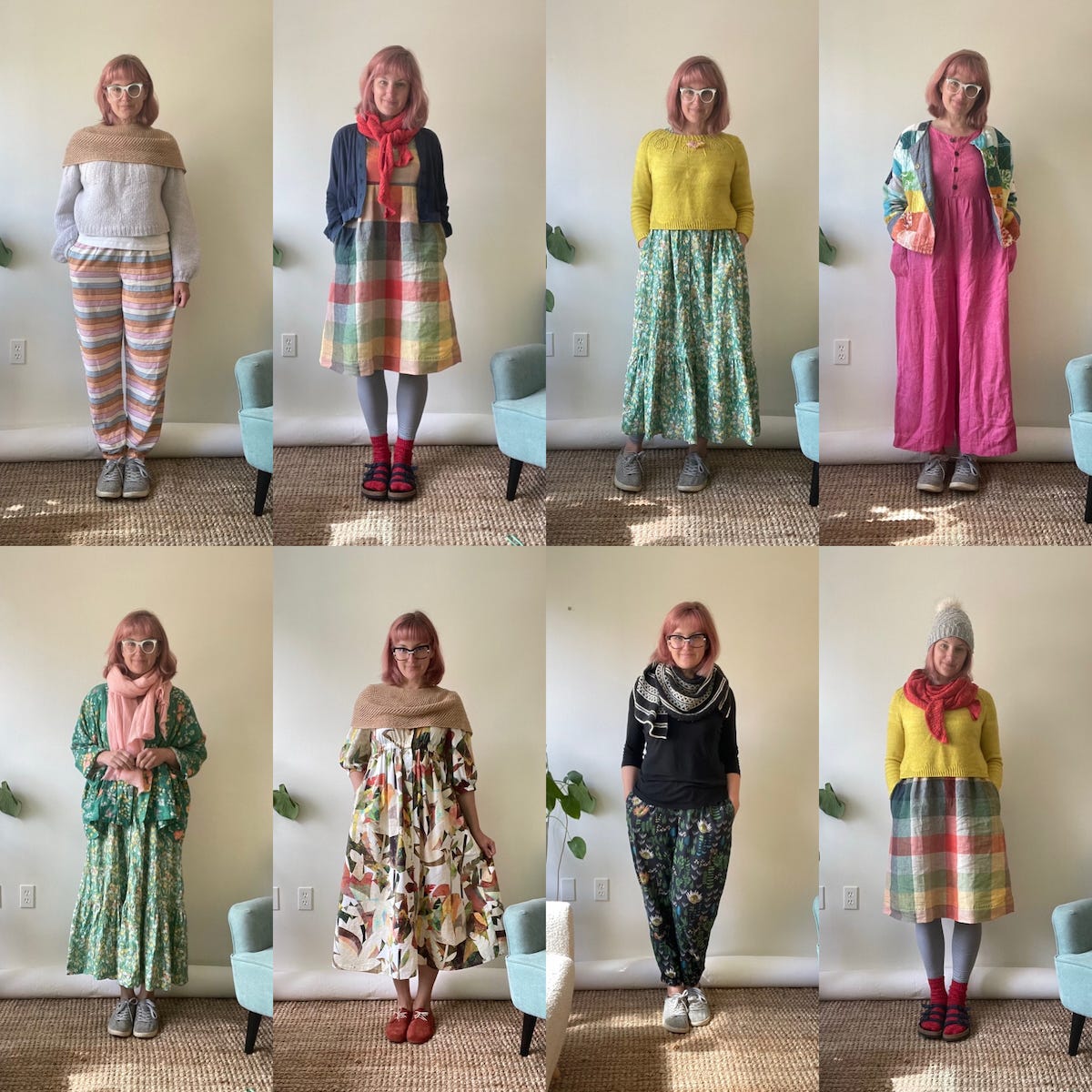

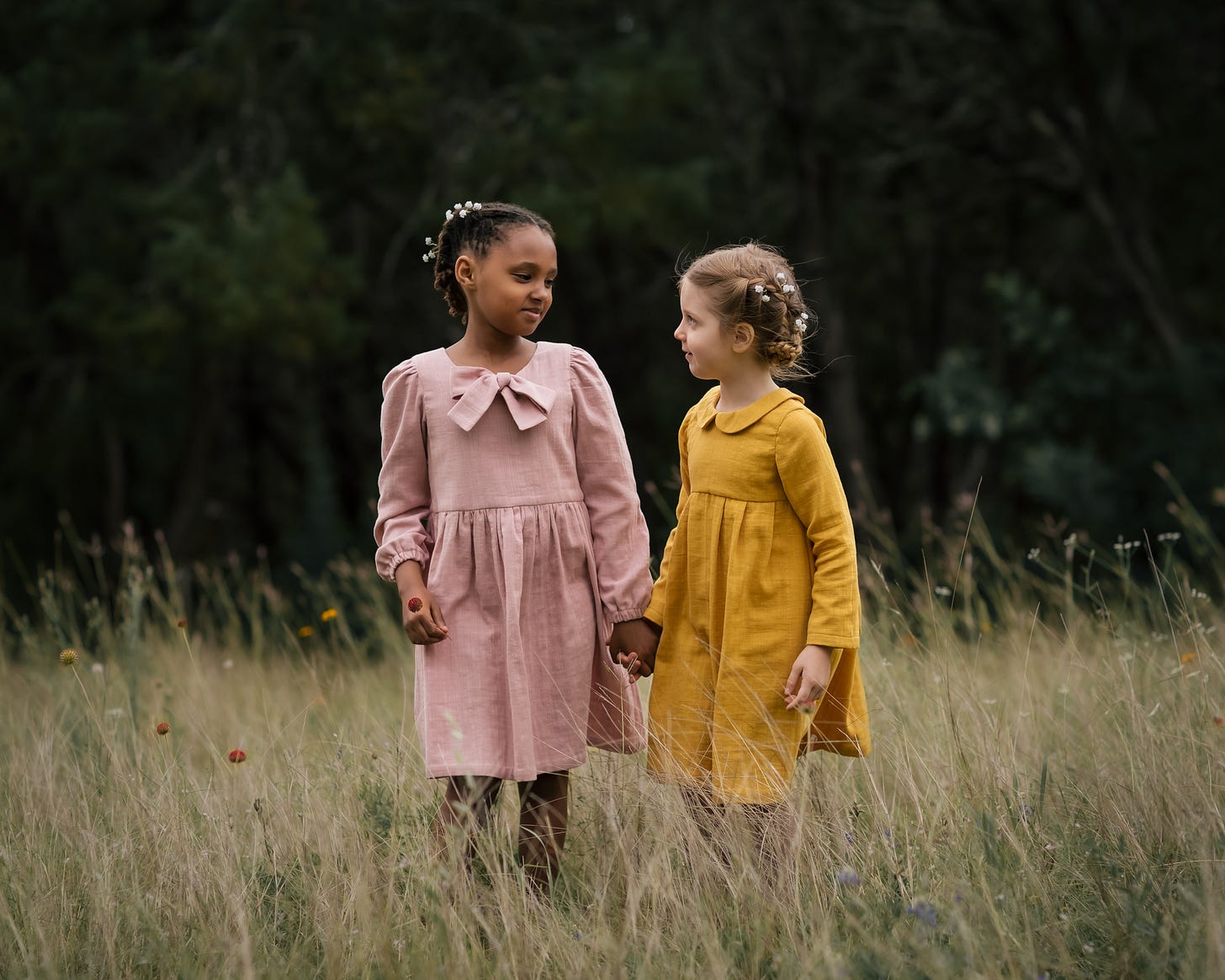
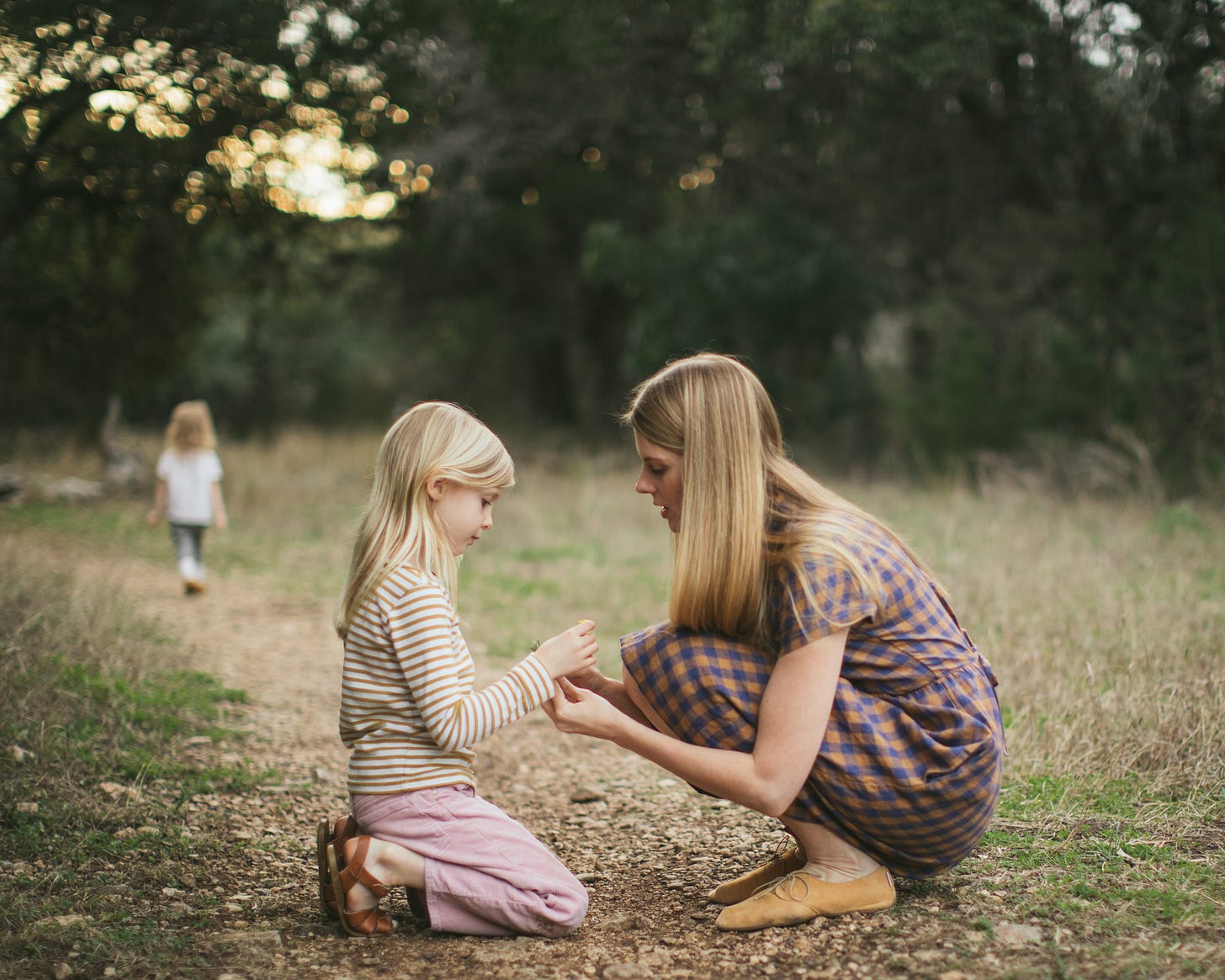


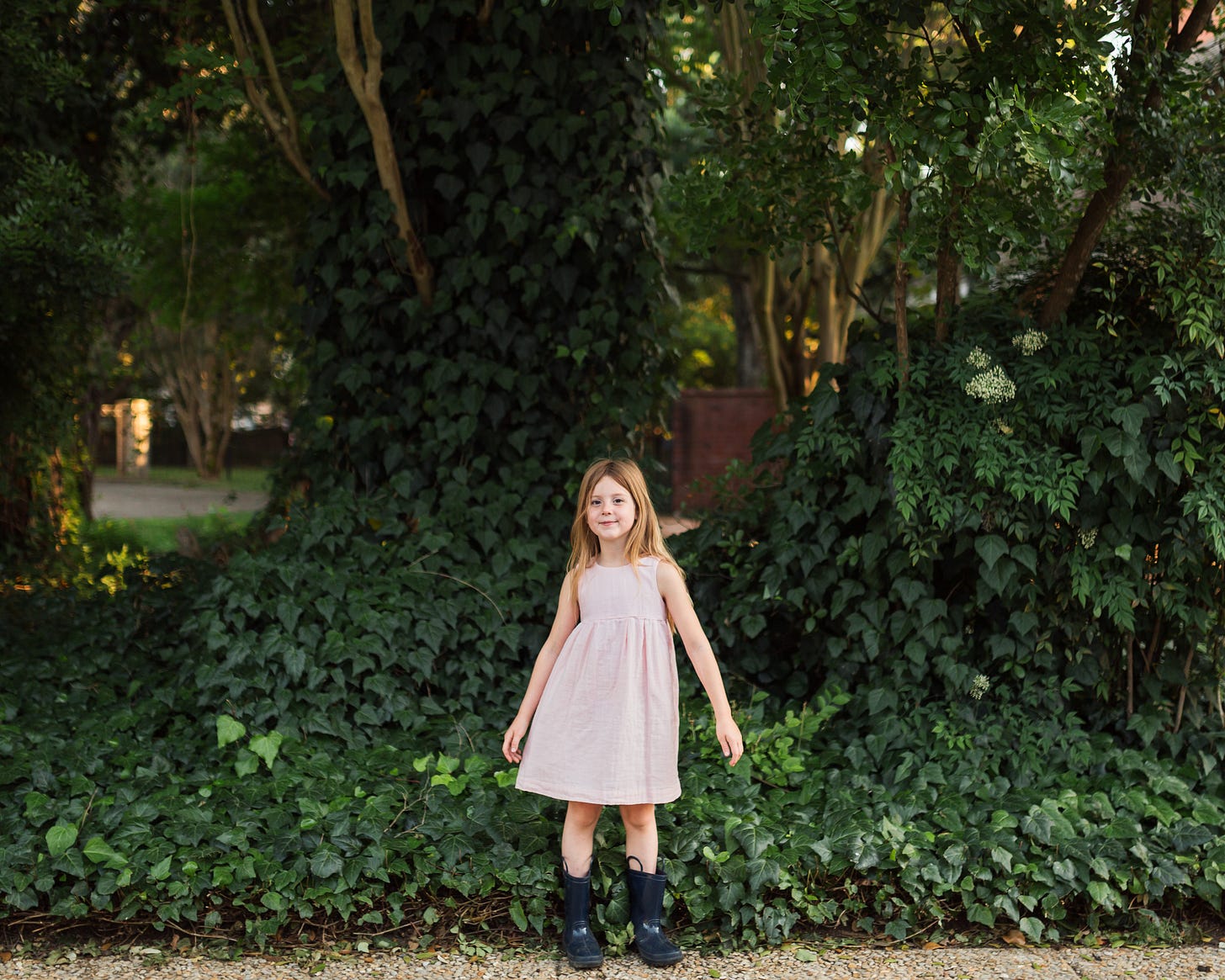
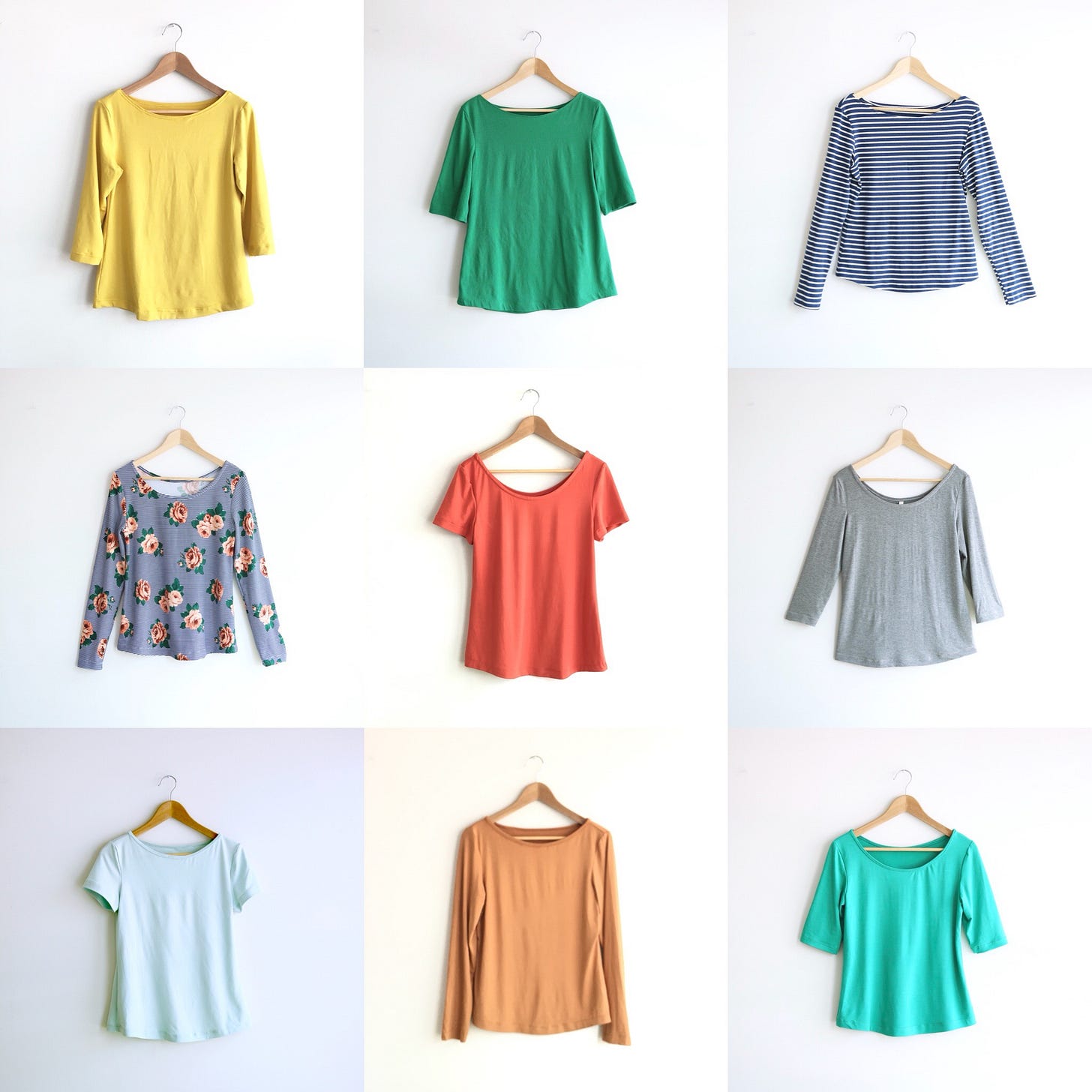
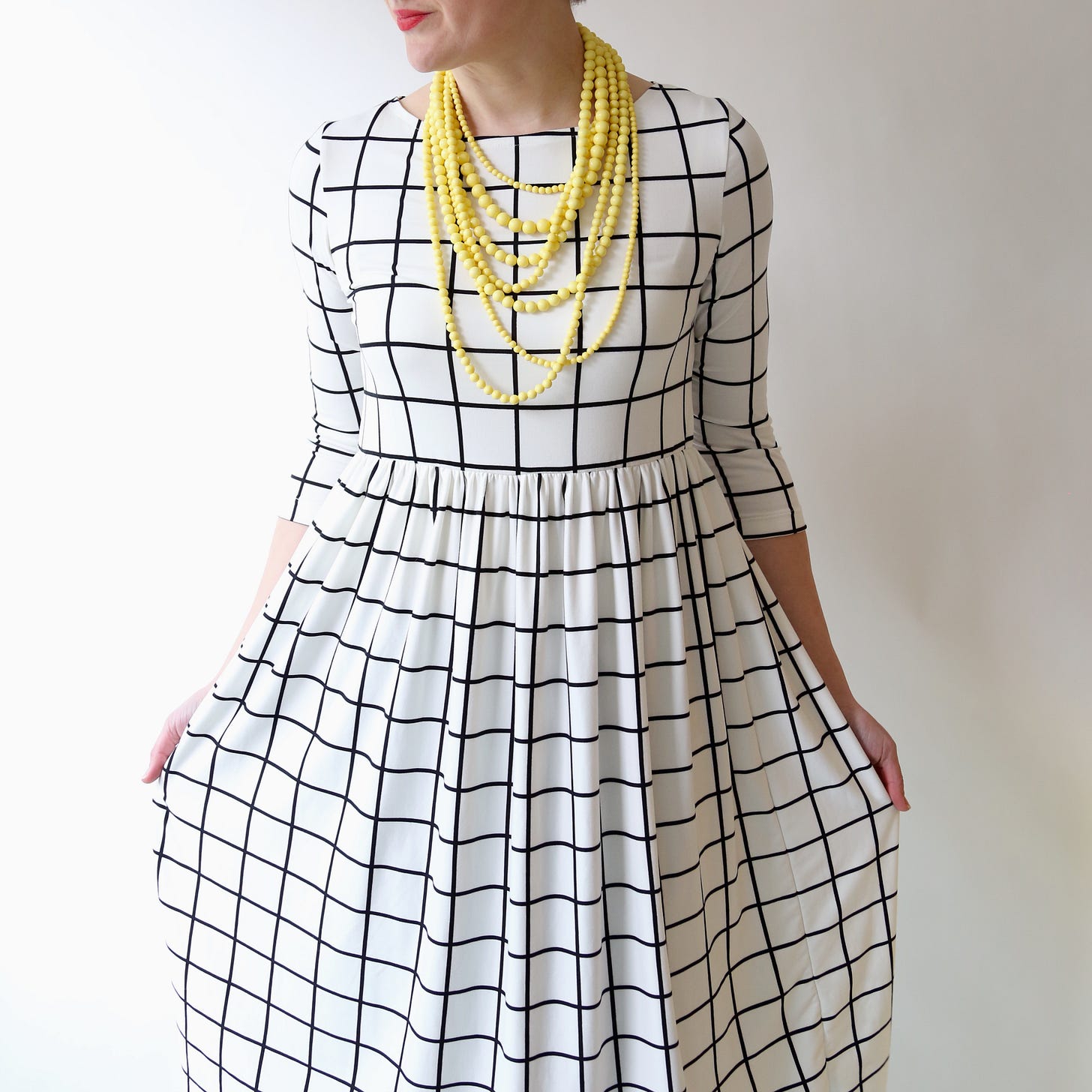

Loved this post!
Oh my goodness Rachel!!! This just lit a fire in me to start sewing again!!! I’m going to start with Geranium dress for my girls!! Thank you and your guest for all this incredible information! I’ll be coming back to it for months I’m sure!!